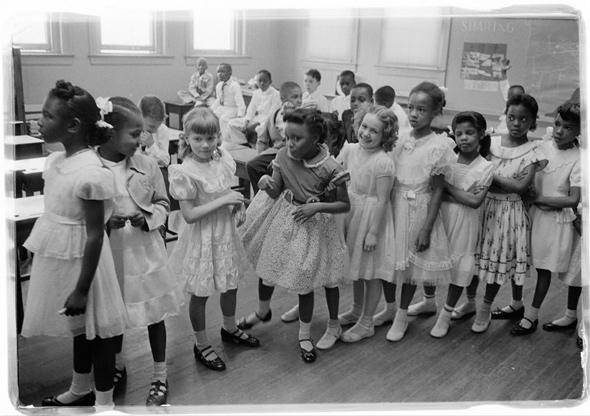The left’s second blunder on integration: Busing wasn’t actually what black America was asking for.

Photo courtesy Thomas J. O’Halloran/U.S. News & World Report Magazine Photograph Collection/Library of Congress
Because Brown v. Board was such a landmark decision, the idea of integration and the larger civil rights movement became somewhat synonymous, wrongly so. Black America wasn’t fighting for integration, per se. They were fighting for agency, the right to exercise control over their lives and, hopefully, to enjoy the full protection of the government while doing so. In education, that’s not what they got. They got a policy that demanded white schools produce statistical proof of significant progress, and one where whites were in charge of executing the burdens imposed on them by the courts. Black schools were unilaterally closed down, their students divvied up and distributed to whatever white school needed to adjust its numbers in order to avoid being sued, often over the very loud protests of black parents; at angry town hall meetings, integration was denounced as a white supremacist plot to destroy the black community. Some black students, fearing the prospect of a hostile white environment, dropped out of school rather than ride the bus.
Not all black parents believed in integration. Those who did wanted a say in how it played out for their children. Some busing programs were voluntary, but by and large black children had to bus where HEW told them to bus. Mandatory racial-balance requirements insisted on it. With Jim Crow, black America lived under an onerous, top-down system that told them where their children could and could not go to school. Now, with busing, black America lived under … an onerous, top-down system that told them where their children could and could not go to school. A 1972 Gallup poll showed that 77 percent of whites were against busing. The same poll showed 47 percent of blacks were against it as well. Many black Americans did believe in the school bus and the access it provided, and busing might have been a viable tool for those families had it been smartly and surgically applied. It wasn’t. It was presented in a sweeping fashion that denied many blacks the agency they sought.
The left’s third blunder on integration: Sending white kids to black schools.
